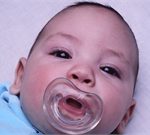Childhood Obesity
 It seems we are in the midst of an obesity crisis in the United States. You, of course, probably already know this from watching the news, reading magazines, and simply looking around. Aside from the social disadvantage of being overweight or obese, there can be serious medical consequences. Prevention…well, like most things in medicine, prevention is the ideal. But if you have a child or children who are overweight or obese, don’t lose hope. Help them when they are young so that they do not need to fight the battle alone as teenagers and adults. Because children are gaining height, many of them may need to hold their weight steady for a year or two to make it back into the healthy weight category. It is a good idea to speak with your child’s Pediatrician and come up with a plan, including weight checks every 3-6 months, if your child is already in the danger zone.
It seems we are in the midst of an obesity crisis in the United States. You, of course, probably already know this from watching the news, reading magazines, and simply looking around. Aside from the social disadvantage of being overweight or obese, there can be serious medical consequences. Prevention…well, like most things in medicine, prevention is the ideal. But if you have a child or children who are overweight or obese, don’t lose hope. Help them when they are young so that they do not need to fight the battle alone as teenagers and adults. Because children are gaining height, many of them may need to hold their weight steady for a year or two to make it back into the healthy weight category. It is a good idea to speak with your child’s Pediatrician and come up with a plan, including weight checks every 3-6 months, if your child is already in the danger zone.
You do not want your child to be hungry, but it is up to you to teach about healthy eating and when to stop.
Obesity is defined as having a Body Mass Index (BMI) greater than the 95th percentile for children of the same age and sex. Body mass index is a measurement that looks at both height and weight together, but it does not measure body fat.
The definition of being overweight is having a BMI between the 85th and 95th percentile for children of the same age and sex.
The Centers for Disease Control provides a BMI calculator on its website where you can put your child’s accurately measured height & weight to determine BMI and percentiles.
Incidence
Between 15-20% of children between the ages of 2 and 17 are obese. These numbers are increasing yearly.
Causes
Consuming (diet) more calories than are being used (physical activity) leads to obesity.
Genetics are the only contributor to obesity that is out of your control.
Environment, behavior, adjusting metabolism – these are all areas where you can have some effect on obesity.
Diet
Drinks – Elimination of all drinks other than water, unsweetened decaffeinated teas, and low fat/nonfat milk alone can make a huge difference in daily caloric intake. Juice, fancy coffee drinks and smoothies are all calorie packed desserts and should be saved for special occasions and not consumed on a daily basis. If you have young children at home you are completely in control of this, so don’t buy the juice and your children will stop asking for it.
Sugar – Sugary cereals, snacks, drinks and, of course, desserts can contain one half to a full day’s worth of calories. Pay attention to the snacks your children are eating, and limit dessert to a small portion on some evenings. Dessert should be markedly smaller than the meal, and should be a privilege.
Portions – If you have a child who just loves to eat then you need to pay attention to the types of foods you offer and portion sizes. Have your child drink 1/2-1 cup of water and snack on veggies before the meal. Put the meal onto a plate and do not put the pots and platters on the table. Provide the appropriate amount of the main dish and/or side dishes on your child’s plate, and if your child is still hungry allow him/her to fill up on more water and fresh veggies.
Do not allow your children to eat in front of a screen – they will eat more and become conditioned to eat in front of the screen in the future. You do not want your child to be hungry, but it is up to you to teach about healthy eating and when to stop.
If you slowly decrease the quantity of food at a meal your child’s sense of appetite and fullness will readjust making him/her happier with normal portion sizes.
Fats/Oils – Foods high in trans fats and saturated fats are more likely to contribute to higher cholesterol, heart disease and diabetes.
Exercise
Children should have at least 60 minutes each day of aerobic physical exercise. Take family walks after dinner in the evenings. Go on weekend hikes. Play tag or soccer at the park. Find ways to incorporate exercise into your child’s day in a way that is fun and healthy. If your child enjoys a particular sport, nurture that. When you enjoy your activity you are more likely to be active regularly.
Television/Media
Screen time includes television, movies, computer and video games.
When children are sitting in front of a screen they are not being active. Even more disturbing is that some studies have shown a drop in metabolism rate while watching television, which would make television worse than sitting and reading a book in more ways than one!
Children under the age of 2 should not have screen time. If you are putting them in front of a screen because you need a cheap 30 minute babysitter while you make dinner, etc, you are not alone. But call it what it is, choose educational videos so that your child is not inundated with advertising, and limit how often you do this.
Children over the age of 2 should not have more than 1-2 hours of quality screen time per day.
Complications of Obesity
- 1. High blood pressure
- 2. High cholesterol
- 3. Glucose intolerance
- 4. Diabetes
- 5. Asthma
- 6. Acid Reflux
- 7. Joint and muscular problems
- 8. Social and psychological problems
A note about prevention
This is a footnote because most people reading about obesity are already experiencing it themselves or in their children. Yet prevention is, of course, the gold standard.
- 1. Limit exposure to high salt and high sugar foods from infancy so that your child’s taste buds get used to healthier foods.
- 2. Breastfeed infants for at least 6 months, and up to a year if possible.
- 3. Allow your child to stop eating when full and teach him/her to trust his/her own sense of this. If you have an infant and are beginning solids you should offer spoonfuls until your child is pushing the spoon away, and then you should stop. If you have an older child, when sitting at dinner if s/he asks to be done, you can turn it around and ask: “How does your belly feel? Does it feel full?” If the answer is yes, then allow your child to be done. There is no benefit to the parenting methods that use the “two more bites” or “clean your plate” mentality. Eating only when hungry is a huge step toward obesity prevention.
- 4. Do not buy juice. Most children are drawn to sweet things, and so your child will prefer juice, even watered down, to water. As children get older those who only like sweet drinks become soda drinkers.
BMI, and the numbers, are only one part of the story. But they are a good place to start. If you have a family history of obesity you may, at your most successful, land in the healthy yet overweight category. Your emphasis with your children should be about being healthy. Healthy eating and exercising keeps their bodies strong. Obese people who exercise regularly and who are physically fit may still have some of the complications of obesity but do not have high levels of abdominal fat and so do not have higher rates of heart disease and diabetes. Lifestyle matters. Model healthy living and make your household healthier and your children will follow suit.
-Monique Araya, MD, FAAP
The medical information on this Web site is provided for educational purposes only. The information provided in this site, or through linkages to other sites, is not a substitute for medical or professional care, and you should not use the information in place of a visit, call consultation or the advice of your physician or other healthcare provider.
If you believe you have a medical emergency you should call 911 or your physician immediately. If you have any questions regarding your health or a medical condition, you should promptly consult your physician.
- Beautiful Smiles are Forever
- Bed Wetting / Nocturnal Enuresis
- Childhood Obesity
- Childhood Vaccinations
- Circumcision
- Diet and Vitamins During Pregnancy
- Exercise and Weight Gain During Pregnancy
- How to Choose a Pediatrician
- Infections – Hard to Avoid?
- Introducing Solids
- Pediatric Dentistry Q & A
- Sex and Pregnancy
- Toilet Training
- Your Child’s Development
 High Viral Loads Make Kids ‘Silent Spreaders’ of COVID-19
High Viral Loads Make Kids ‘Silent Spreaders’ of COVID-19 Clotting Tied to COVID-19 May Harm the Placenta
Clotting Tied to COVID-19 May Harm the Placenta ‘Kangaroo Care’ Has Big Health Benefits For Preemies
‘Kangaroo Care’ Has Big Health Benefits For Preemies Babies Are Spared Severe COVID-19 Symptoms
Babies Are Spared Severe COVID-19 Symptoms Sleepless Babies May Face Emotional Troubles as Kids
Sleepless Babies May Face Emotional Troubles as Kids Secrets to Soothing a Cranky Baby Safely
Secrets to Soothing a Cranky Baby Safely How to Protect Your Baby Against Eczema
How to Protect Your Baby Against Eczema How to Protect Your Baby From Unsafe Products
How to Protect Your Baby From Unsafe Products How to Soothe Baby’s Teething Pain Safely
How to Soothe Baby’s Teething Pain Safely How to Protect Your Child From Choking
How to Protect Your Child From Choking How to Tame Morning Chaos
How to Tame Morning Chaos Nearly 700,000 Infant Rocking Sleepers Recalled Due to Infant Deaths
Nearly 700,000 Infant Rocking Sleepers Recalled Due to Infant Deaths How Much Does Your Kid Weigh? Chances Are, You’re Underestimating
How Much Does Your Kid Weigh? Chances Are, You’re Underestimating When You Go From a Family of 3 to a Family of 4
When You Go From a Family of 3 to a Family of 4 Bringing Baby in a Lyft, Uber? Child Car Seats Are Rarely Included
Bringing Baby in a Lyft, Uber? Child Car Seats Are Rarely Included Experts Sound Warning About ‘Baby Boxes’
Experts Sound Warning About ‘Baby Boxes’ A-C-T to Prevent Hot Car Tragedies
A-C-T to Prevent Hot Car Tragedies Smart Steps for a Safe Nursery
Smart Steps for a Safe Nursery More Than 1 Day of First-Trimester Bleeding Ups Odds for Smaller Baby
More Than 1 Day of First-Trimester Bleeding Ups Odds for Smaller Baby Rear-Facing Car Seats Protect Tots in Crashes From Behind: Study
Rear-Facing Car Seats Protect Tots in Crashes From Behind: Study Baby Sitters, Relatives Often Unaware of SIDS Risk
Baby Sitters, Relatives Often Unaware of SIDS Risk Window Blinds: A Silent Killer in Your Home
Window Blinds: A Silent Killer in Your Home Babies Start Connecting Words Early On
Babies Start Connecting Words Early On Parents Getting Better at Using Car Seats Safely
Parents Getting Better at Using Car Seats Safely Too Many Babies Still Placed on Stomach to Sleep: Study
Too Many Babies Still Placed on Stomach to Sleep: Study Time for Some Summer Sun Safety Tips
Time for Some Summer Sun Safety Tips Can Sharing Your Bedroom With Baby Come With Risks?
Can Sharing Your Bedroom With Baby Come With Risks? Hospital ‘Baby Boxes’ May Help Prevent SIDS in Newborns
Hospital ‘Baby Boxes’ May Help Prevent SIDS in Newborns Fewer SIDS Deaths in U.S., But Gaps Among Racial Groups Remain
Fewer SIDS Deaths in U.S., But Gaps Among Racial Groups Remain How to Protect Your Child From Accidental Poisoning
How to Protect Your Child From Accidental Poisoning